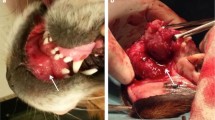Abstract
Background
Trigemino-cardiac reflex is a physiologic response of the body to pressure effects in the region of distribution of the trigeminal nerve. Oral and maxillofacial surgical procedures can induce the development of this reflex, which leads to significant changes in the heart rate and sinus rhythms. This study intends to evaluate the effects of this reflex in patients with facial fractures and its subsequent management.
Patients and Methods
A total of thirty-seven patients with facial fractures who reported to the Department of Oral and Maxillofacial Surgery at Basaveswar Teaching and General Hospital, Gulbarga during a period from July 2015–March 2016 were considered for the study.
Results
A male preponderance is observed with the most susceptible age group being 21–30 years. Twenty-three patients sustained mid-facial fractures alone, nine patients had isolated mandible fractures and five patients had fractures of both the mid-face and mandible. A relative bradycardia was observed in the patients with mid-facial trauma, both at the time of presentation and also during the surgical reduction of midfacial fractures which improved after completion of procedure in most of the patients. However, in two patients, the bradycardia progressed to a cardiac asystole during midface manipulation which required immediate halt of the procedure and intravenous administration of atropine.
Conclusion
Trigeminocardiac reflex though physiologic, which usually tends to subside without complications is not to be neglected in the surgeries of the maxillofacial skeleton. A propensity for unforeseen complications due to this reflex has to be avoided by meticulous monitoring of the ECG.




Similar content being viewed by others
References
Devakumari S, Vijhayapriya T (2013) Trigemino cardiac reflex and its importance in maxillofacial surgery—a review. IOSR J Dental Med Sci 12(2):7–11
Lang S, Lanigan DT, van der Wal M (1991) Trigeminocardiac reflexes: maxillary and mandibular variants of the oculocardiac reflex. Can J Anaesth 38(6):757–760
Shelly MP, Church JJ (1988) Bradycardia and facial surgery (letter). Anaesthesia 43:422
Cha ST, Eby JB, Katzen JT, Shahinian HK (2002) Trigeminocardiacreflex: a unique case of recurrent asystole during bilateraltrigeminal sensory root rhizotomy. J Craniomaxillofac Surg 30:108–111
Webb Michael D, Unkel John H (2007) Anesthetic management of the trigeminocardiac reflex during mesiodens removal—a case report. Anesth Prog 54:7–8
Loewinger J, Cohen M, Levi E (1987) Bradycardia during elevation of a zygomatic arch fracture. J Oral Maxillofac Surg 45:710–711
Shearer ES, Wensione R (1987) Bradycardia during elevation of zygomatic fractures. Anaesthesia 42:1207–1208
Bainton R, Lizi E (1987) Cardiac asystole complicating zygomatic arch fracture. Oral Surg Oral Med Oral Pathol 64(24–5):10
Kosaka M, Asamura S, Kamiishi H (2000) Oculocardiac reflex induced by zygomatic fracture: a case report. J Craniomaxillofac Surg 28:106–109
Bhargava D, Thomas S, Chakravorty N, Dutt A (2014) Trigeminocardiac reflex: a reappraisal with relevance to maxillofacial surgery. J Maxillofac Oral Surg 13(4):373–377
Ragano JR, Marcoot RM, Taylor SE (1989) Asytole during Le Fort I osteotomy. J Oral Maxillofac Surg 47:1082–1083
Knoblock R, Lorenz A (1962) Uber emste komplikationen nach Shieloperationen Klinisce Monatsblatter fur Augenheilkunde 141:348
Arasho B, Sandu N, Spiriev T, Prabhakar H, Schaller B (2009) Management of the trigeminocardiac reflex: facts and own experience. Neurol India 57(4):375–380
Author information
Authors and Affiliations
Corresponding author
Ethics declarations
Conflict of interest
The authors declare that they have no conflict of interest.
Informed Consent
“Informed consent was obtained from all individual participants included in the study.”
Ethical Approval
“All procedures performed in studies involving human participants were in accordance with the ethical standards of the institutional and/or national research committee and with the 1964 Helsinki declaration and its later amendments or comparable ethical standards.”
Rights and permissions
About this article
Cite this article
Joshi, U.M., Munnangi, A., Shah, K. et al. Trigemino-Cardiac Reflex: A Phenomenon Neglected in Maxillofacial Surgery?. J. Maxillofac. Oral Surg. 16, 181–185 (2017). https://doi.org/10.1007/s12663-016-0959-6
Received:
Accepted:
Published:
Issue Date:
DOI: https://doi.org/10.1007/s12663-016-0959-6



